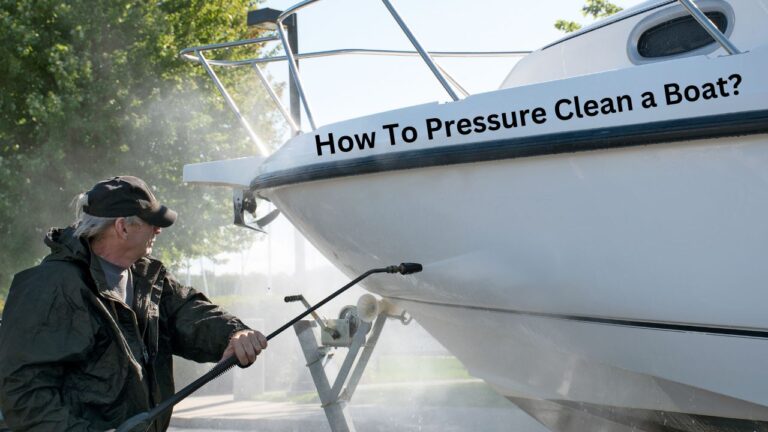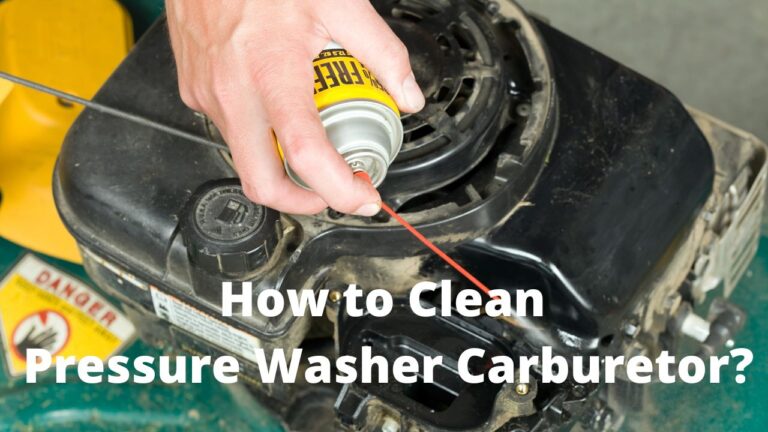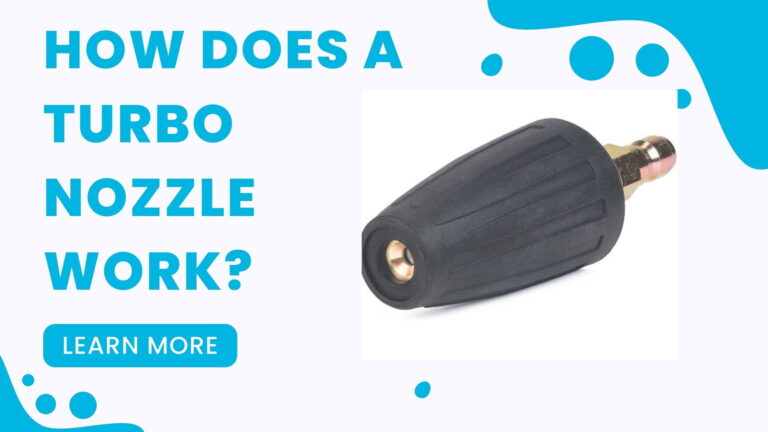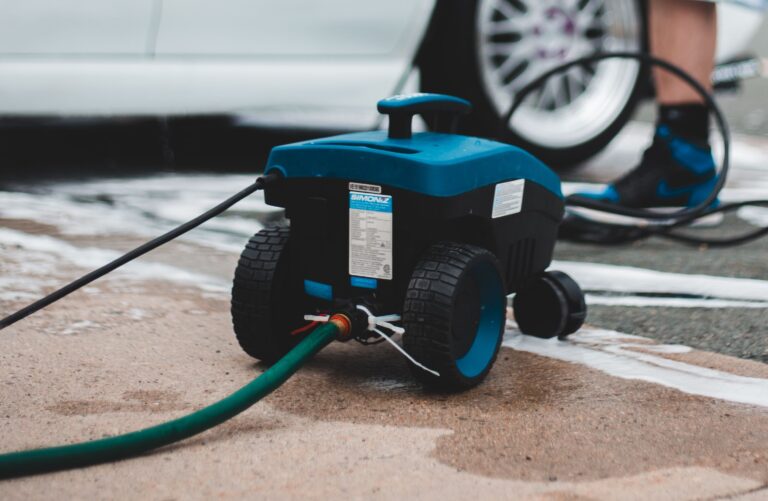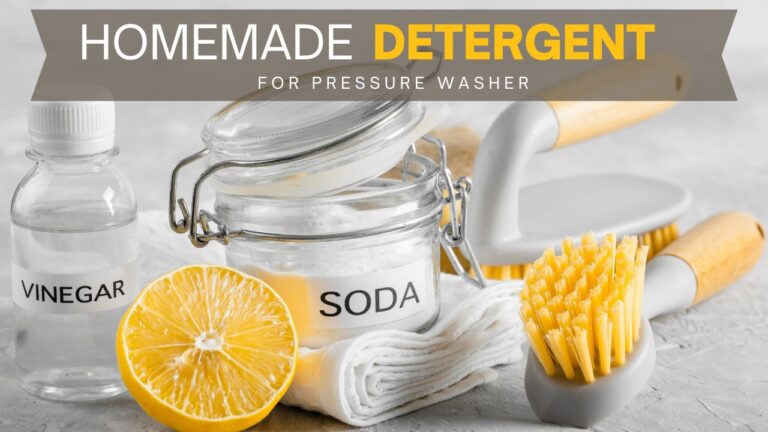Ultimate Guide On Soft Washing Your Home
Are you looking for practical ways to eliminate the algae, mold, and debris collected on your windows and patios without damaging the exterior? Look no further because soft washing might solve all your cleaning problems!
Soft washing is an effective and safe method to clean your house’s exterior and decks using a low-water pressure of 500 PSI. Moreover, bleach is used as a primary disinfectant solution to halt the growth of moss and bacteria to protect your family from deadly diseases.
As a new homeowner, you might be confused about how to soft wash a house with a pressure washer and how long it takes to soft wash a house. In this article, we will discuss all your queries in detail, along with five simple soft washing techniques that will make cleaning easy and fun.
Buy The Right Equipment
Before you start, gathering all the tools, nozzles, and cleaning solutions in a single tray for a clutter-free cleaning experience is crucial. Here’s a material checklist for soft wash house cleaning equipment that we recommend:
- Safety glasses and gloves
- Light Duty pressure washer
- A long garden hose
- Soft washing nozzle
- Ladder and scrubbing brush
- Cleaning Surfactant
Now that you have gathered all the necessary equipment, what’s next? Check multiple hourly weather forecasts and choose a cool, non-windy day so the water is blasted only on the walls and not your face.😉
Prepare Your House
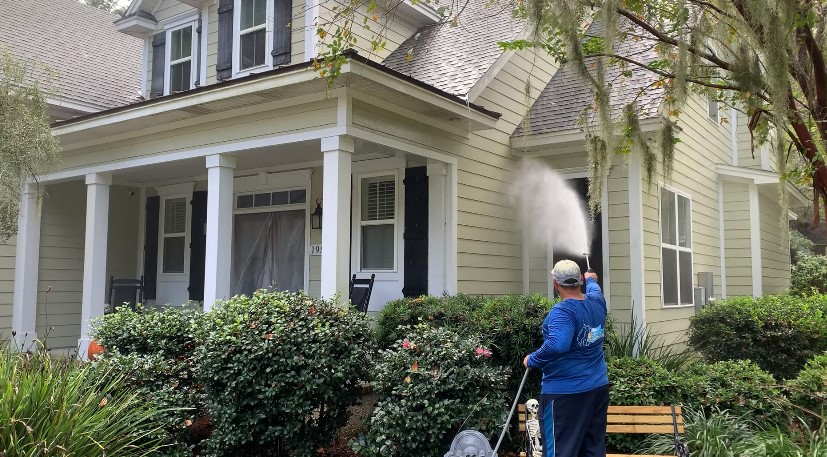
Remove all the outdoor mats and furniture to protect them from getting wet and damaged by the bleach. Next, removing any potted plants or flowers on your patio is a good idea, as they can die if soapy water accumulates in the pot.
Strictly warn your children to stay inside along with cats and dogs, as pressure washers can be noisy that may scare animals. Besides, check that all the windows and doors are tightly closed so the water won’t flood inside. If you have wooden doors, put towels down to prevent the wood from cubicle rot.
Apply the Bleach and Cleaning Surfactants
It is recommended to hand-pick large materials like leaves and stones as they can get stuck in the hose and ruin your pressure washer. Then, mix 1 part of regular bleach in 1 part of the water in a large bucket and thoroughly spray it on the desired area.
Let it sit for at least 20 minutes before you start your pressure washer.
After that, we suggest you also apply a cleaning surfactant to prevent excessive run-off of the bleach solution. Furthermore, it loosens any trapped dirt by penetrating deep into the surface, improving the water’s ability to wash away unwanted gunk.
Before rinsing, use a soft-bristle brush to scrub away any stubborn stains or heavily soiled areas gently. Scrubbing too vigorously runs the risk of damaging the surface.
Begin Soft Washing
Now comes the fun part; Soft Washing! How satisfying are those pressure-washing youtube shorts where everything gets as clean as new? Believe us; we can watch them the whole day!
Fix your garden hose and a nozzle to the pressure washer and gently spray at an 85-degree angle. Use a wide-angle nozzle such as a 40- or 65-degree nozzle that reduces the water stream’s intensity. Keep the nozzle 30 centimeters above the surface for an effective cleaning job.
Start washing the area where you first applied the detergent in a forward and back motion. Always start with cleaning the outside of the gutters, followed by the roof, patio, and window frames.
Go Around and Clean Up
Some ammonia-based cleaning chemicals require proper disposal due to their toxic nature. See the manufacturer’s instructions behind the label and discard the run-off accordingly. Properly rinse your cleaning equipment, including brushes and nozzles, to prevent them from contamination.
Also, remove any plastic sheeting used to cover the windows or plants. Properly fold them back for future use if they are still in good condition.
Finally, rinse any dirt, debris, or cleaning solution runoff that may have accumulated nearby. This lessens the risk of slipping and keeps the immediate area clean.
How Long Does it Take to Soft Wash a House?
The time taken to soft wash a house depends on several factors, including the size of the house, how dirty it is, and the complexity of the surface.
Some rough estimates say small to medium-sized dwellings may take 2 to 6 hours, while a multi-story building can take 4 to 10 hours.
How Much Does It Cost To Soft Wash a House?
Depending on the size, state, and location of the house, the cost of soft washing can vary, but it typically falls between $275 and $1000. Soft washing can make a home look cleaner and last longer than power washing.
Top 3 Benefits of Soft Washing a House
Little to No Damage to the Exterior
A low-pressure or soft washing prevents your exterior paint from chipping off and windows from shattering. It also allows you to clean hard-to-reach areas, as water streams can go as high as 50 feet above the ground without ladders or extension poles.
Enjoy Healthy Home Environment
Since the Covid 19 pandemic, people have been more concerned about sanitizing their environment and surfaces. The heavy wind might blow pollen and bacteria stuck into your roof, resulting in severe asthmatic attacks in sensitive people.
Therefore, soft washing is a budget-friendly method to remove all the contaminants from your house. A soft washing a year keeps the doctor away.
Long-Lasting Results
Soft washing gives your house’s exterior a deeper and longer-lasting clean than other cleaning techniques.
To keep your home clean for a longer time, the specialized cleaning solutions used in soft washing frequently contain biocides or detergents that help inhibit algae, mold, and mildew regrowth.
FAQs
What is the best way to soft wash a house?
Start by examining the surfaces and safeguarding nearby plants and delicate areas before soft washing a house. Apply a cleaning solution uniformly from bottom to top using a soft wash sprayer or pump sprayer after diluting it, following the manufacturer’s instructions.
Give the solution time to sit as directed, gently stirring as necessary. Once the cleaning solution and debris have been completely removed, use low-pressure water to rinse the surfaces from top to bottom.
Applying a post-treatment remedy might be a good idea for prevention. Always put safety first, adhere to manufacturer recommendations, and use the proper safety equipment when soft washing.
What chemicals are used to soft wash a house?
Different chemicals can be used when soft washing a home, depending on the cleaning requirements and the kind of surfaces being treated. Following are a few frequently used chemicals:
Bleach:
It is frequently used to kill and remove organic growth like algae, mold, and mildew.
Surfactants:
These detergent-like ingredients aid in cleaning solutions’ efficient application and surface adhesion. Surfactants help to break down stains, grime, and other contaminants.
Sodium hydroxide:
It can remove tough stains, grease, and oil from surfaces.
Potassium hydroxide:
It is an alkaline caustic potash that works well to remove grease and stains.
Sodium Percarbonate:
This substance, which combines hydrogen peroxide and sodium carbonate, is frequently used as an alternative to bleach. It may work well to lighten surfaces and remove organic stains.
Algicides and mildewcides:
They are specialized substances that stop algae growth, mildew, and other organic matter after cleaning. They assist in keeping surfaces cleaner for a more extended period.
What is the soft washing technique?
To prevent damage, the soft washing technique uses low pressure to clean delicate surfaces like siding, roofs, and the outsides of houses. The cleaning solution is delicately sprayed onto the surfaces using a soft wash or pump sprayer.
The solution is allowed to sit on the surfaces for a predetermined amount of time, usually to dissolve dirt, stains, algae, mold, and mildew. Finally, the surfaces are thoroughly rinsed with low-pressure water to remove the cleaning agent and debris.
What mix for soft washing?
Typically, a base of water is combined with bleach, surfactants, and optional additional additives to create the mixture for soft washing. The primary ingredient is water, and bleach aids in getting rid of organic growth like algae and mold.
Surfactants are added to increase cleaning effectiveness by dissolving dirt and stains and enhancing solution adhesion to surfaces.
Final Verdict
To sum up, soft washing is a safe and effective method for removing algae, mold, and debris from windows and patios without damaging the exterior. Soft washing offers a thorough cleaning solution with its low-water pressure and bleach as a disinfectant.
Following the proper techniques and using the right equipment can achieve impressive results and enjoy a clean, well-maintained home.


